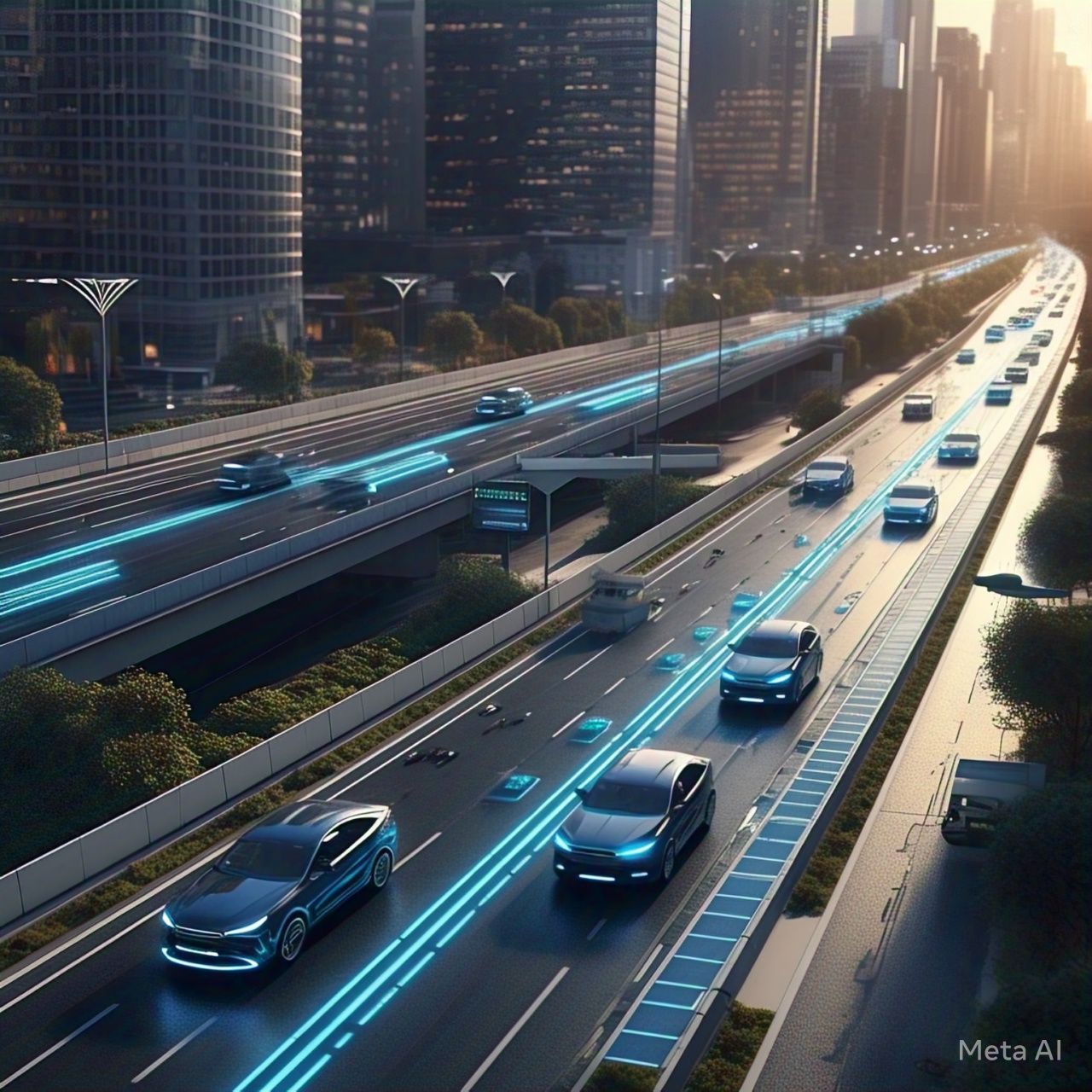Table of Contents
- Introduction
- The Concept of Smart Roads
- AI Technologies Powering Smart Roads
- Machine Learning and Predictive Analytics
- Computer Vision and Image Recognition
- IoT and Real-Time Traffic Monitoring
- Benefits of AI-Driven Smart Roads
- Reduced Traffic Congestion
- Enhanced Road Safety
- Environmental Impact Reduction
- Improved Emergency Response
- Challenges and Limitations
- Future Prospects of AI in Smart Road Development
- Conclusion
- FAQs
1. Introduction
With the ever-increasing number of vehicles on roads, traffic congestion has become a global issue, leading to lost productivity, higher fuel consumption, and increased pollution. Traditional traffic management systems are struggling to keep pace with the growing urban population. Enter Artificial Intelligence (AI), which is revolutionizing how traffic flows through smart roads. By leveraging cutting-edge technologies, AI-driven smart roads aim to enhance efficiency, improve safety, and reduce environmental impact.
2. The Concept of Smart Roads
Smart roads integrate AI, sensors, and data analytics to create a seamless and efficient transportation system. These roads use embedded technologies such as Internet of Things (IoT) devices, advanced cameras, and real-time monitoring systems to analyze and manage traffic dynamically. Smart roads are designed to communicate with vehicles, traffic signals, and centralized control systems to optimize traffic flow and reduce congestion.
3. AI Technologies Powering Smart Roads
3.1 Machine Learning and Predictive Analytics
AI-powered machine learning algorithms analyze past traffic data to predict congestion patterns, allowing authorities to implement proactive measures such as dynamic lane adjustments and optimized traffic signal timings.
3.2 Computer Vision and Image Recognition
Cameras with AI-driven image recognition detect road conditions, traffic density, and violations like red-light running. These systems help in real-time traffic management and law enforcement.
3.3 IoT and Real-Time Traffic Monitoring
IoT-enabled sensors installed on roads collect and transmit real-time data to AI-based traffic control centers. This data helps in making informed decisions about rerouting traffic and adjusting signal timings.
4. Benefits of AI-Driven Smart Roads
| Benefit | Description |
|---|---|
| Reduced Traffic Congestion | AI optimizes traffic flow, reducing delays and improving road capacity utilization. |
| Enhanced Road Safety | Smart roads detect hazards, alert drivers, and help prevent accidents. |
| Environmental Impact Reduction | Optimized traffic flow leads to lower fuel consumption and reduced emissions. |
| Improved Emergency Response | AI directs emergency vehicles through optimal routes, reducing response times. |
5. Challenges and Limitations
While AI-driven smart roads offer numerous benefits, challenges remain, such as high implementation costs, data privacy concerns, cybersecurity threats, and the need for extensive infrastructure upgrades. Moreover, integrating AI with existing road systems requires careful planning and execution.
6. Future Prospects of AI in Smart Road Development
The future of smart roads looks promising with advancements in AI and 5G technology. Emerging concepts such as autonomous vehicles, smart intersections, and AI-driven traffic enforcement systems will further enhance road efficiency and safety. Governments and private enterprises are investing heavily in research to make smart roads more accessible and efficient.
7. Conclusion
AI-powered smart roads are revolutionizing traffic management by optimizing flow, reducing congestion, and improving safety. While challenges exist, the long-term benefits outweigh the drawbacks, making smart roads a crucial component of future urban infrastructure. As AI continues to evolve, its role in transportation will only grow, paving the way for a more efficient and sustainable future.
8. FAQs
Q1. How do smart roads use AI to reduce traffic congestion?
Smart roads utilize AI algorithms to analyze real-time traffic data and predict congestion patterns. AI adjusts traffic signals and suggests alternate routes to improve traffic flow.
Q2. What role does IoT play in smart roads?
IoT devices collect and transmit traffic data to centralized AI systems, enabling real-time decision-making for traffic management.
Q3. Are smart roads cost-effective?
Although initial implementation costs are high, smart roads reduce long-term expenses by improving traffic efficiency, reducing fuel consumption, and lowering accident rates.
Q4. Can smart roads work with autonomous vehicles?
Yes, smart roads are designed to interact with autonomous vehicles, providing them with real-time traffic updates and ensuring smoother navigation.
Q5. What are the biggest challenges in implementing AI-powered smart roads?
Challenges include high costs, cybersecurity risks, data privacy concerns, and the need for significant infrastructure upgrades.
References
- Smith, J. (2022). Artificial Intelligence in Traffic Management. Transportation Research Journal.
- World Economic Forum. (2023). The Future of Smart Cities and AI-Driven Road Systems.
- National Highway Traffic Safety Administration (NHTSA). (2023). AI and Traffic Safety: A Comprehensive Study.




